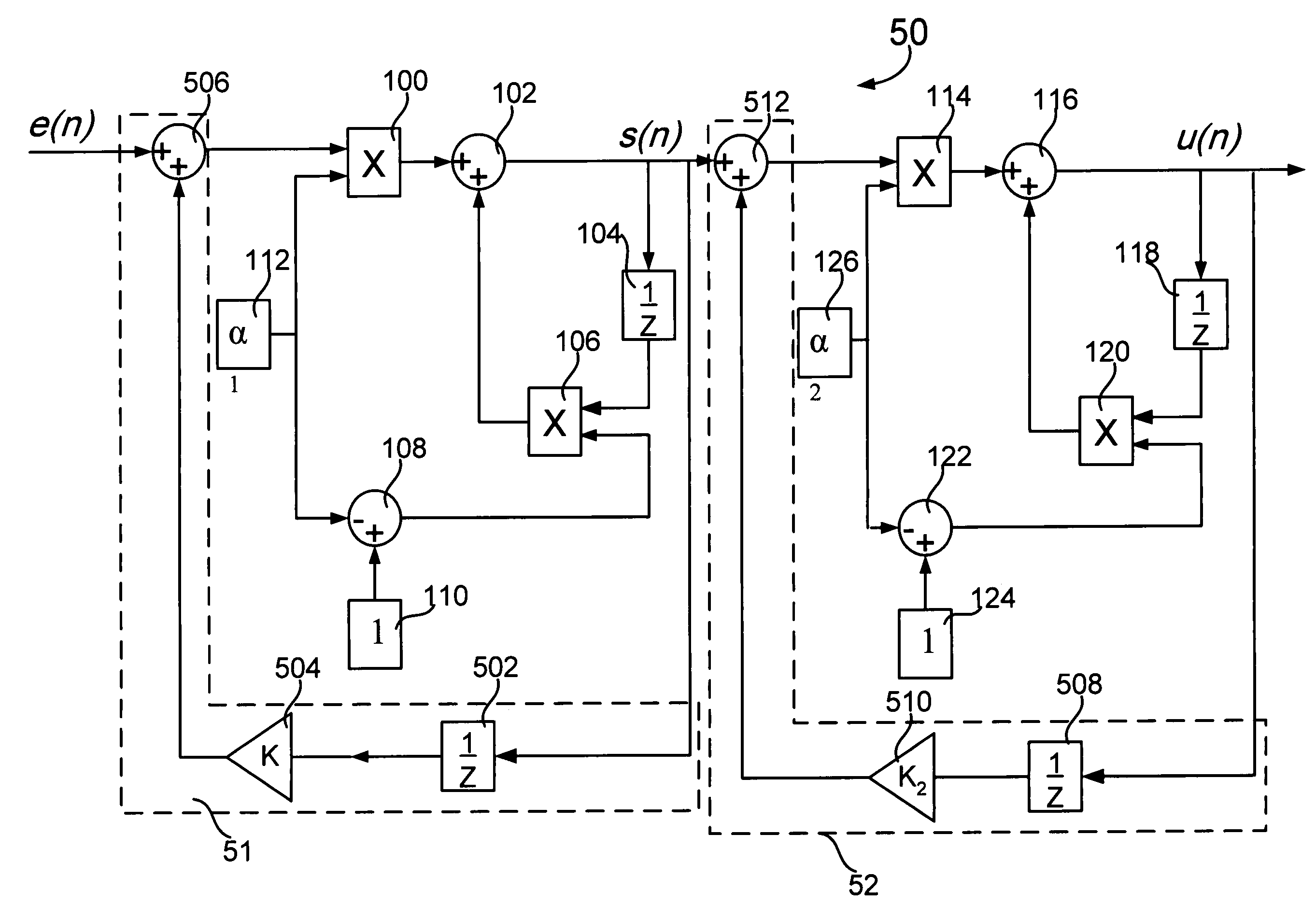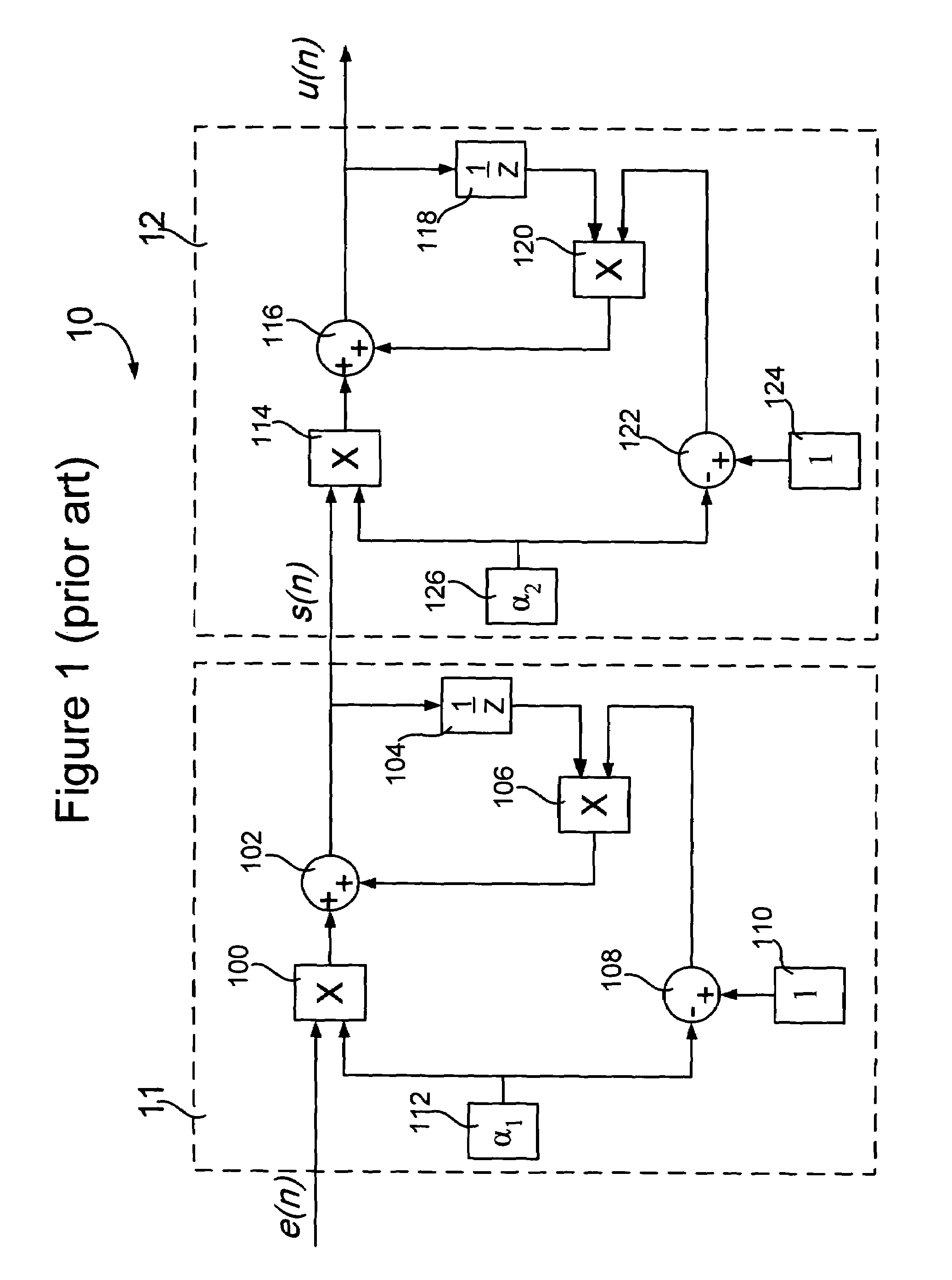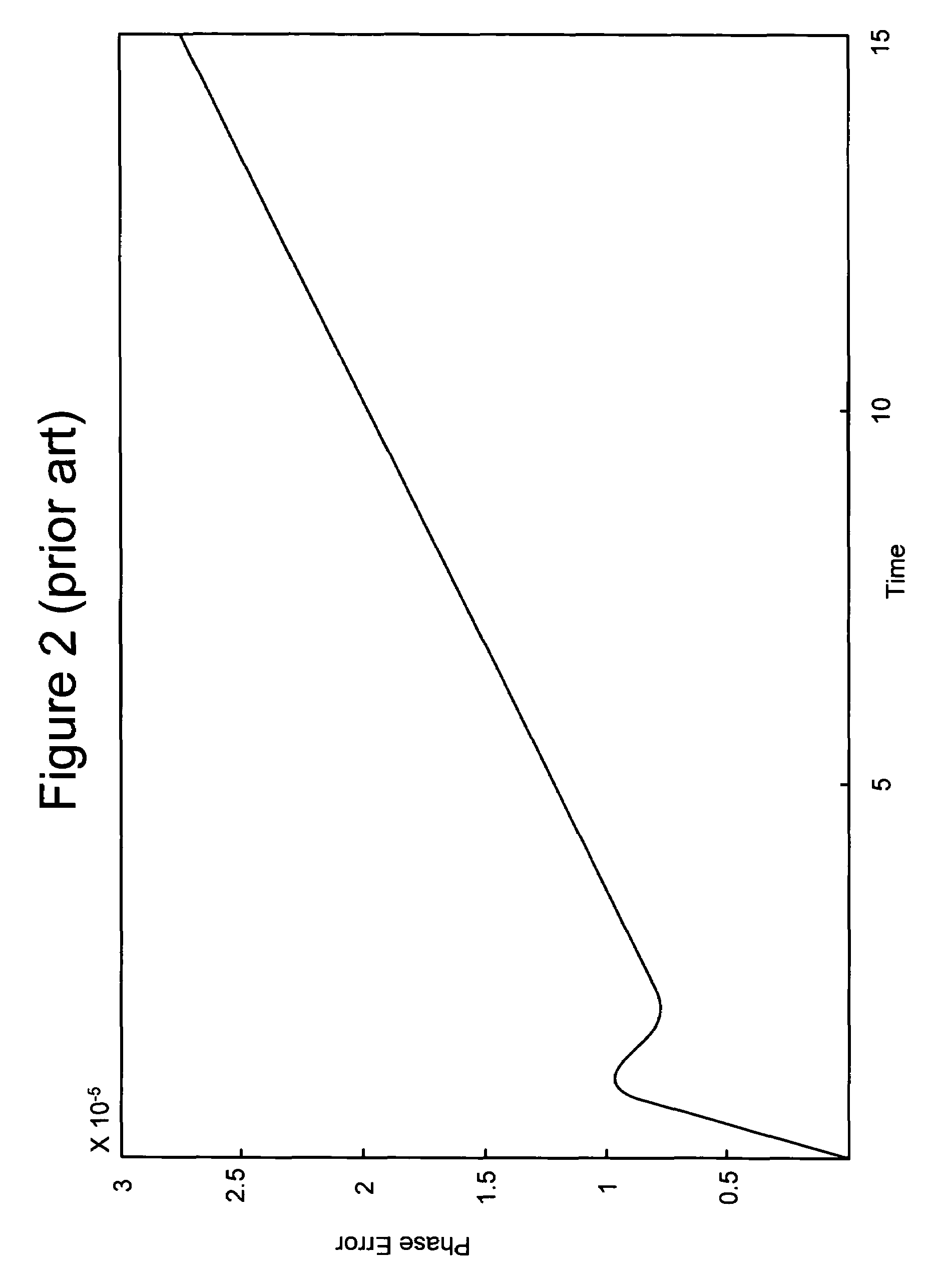Technique for filter-enhanced clock synchronization
a clock synchronization and filter technology, applied in the field of computer and communication networks, can solve problems such as data loss, periodic line errors, data loss,
- Summary
- Abstract
- Description
- Claims
- Application Information
AI Technical Summary
Benefits of technology
Problems solved by technology
Method used
Image
Examples
Embodiment Construction
)
[0034]Referring to FIG. 4, there is shown a flow chart illustrating an exemplary method for filter-enhanced clock synchronization in accordance with the present invention.
[0035]The exemplary method starts in step 400.
[0036]In step 402, a loop filter comprising a double EWMA filter may be provided in a phase-locked loop (PLL). The loop filter may be positioned between a phase detector and a voltage controlled oscillator (VCO) (or digitally controlled oscillator (DCO)). The loop filter, an example of which is shown in FIG. 5, may be based on the double EWMA filter shown in FIG. 1. In FIG. 5, the loop filter 50 comprises two cascaded EWMA filters. An EWMA filter is a circuit that can generate a smooth estimate of an input signal by applying a currently observed input signal to a previous estimate. As a result, the high frequency part of the input signal may be filtered out and its DC part may be retained.
[0037]In step 404, a first feedback loop 51 may be optionally coupled to the firs...
PUM
 Login to View More
Login to View More Abstract
Description
Claims
Application Information
 Login to View More
Login to View More - R&D
- Intellectual Property
- Life Sciences
- Materials
- Tech Scout
- Unparalleled Data Quality
- Higher Quality Content
- 60% Fewer Hallucinations
Browse by: Latest US Patents, China's latest patents, Technical Efficacy Thesaurus, Application Domain, Technology Topic, Popular Technical Reports.
© 2025 PatSnap. All rights reserved.Legal|Privacy policy|Modern Slavery Act Transparency Statement|Sitemap|About US| Contact US: help@patsnap.com



